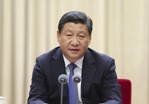Anniversaries of significant historical dates and economic plans are cause for celebration in the Chinese Communist Party (CCP). Next month is doubly important as it marks 10 years since Xi Jinping gained power as general secretary of the CCP. China also will hold an important Party Congress where progress on Xi’s decade-long economic record will be reviewed. While Xi has attained exulted political status, it appears that the results of his economic reform plan are mixed. He “has garnered the most attention for his actions in non-economic realms (treatment of Uyghurs, Tibetans, and Hong Kong citizens; zero tolerance of COVID-19; and alignment with Russia and support for its invasion of Ukraine). But his economic record is important as well because it affects the everyday life of 1.4 billion people, with large spillovers to the rest of the world economy,” says David Dollar of China Leadership Monitor.
As an economy matures its growth rate typically slows. This is the case with China. During Hu Jintao’s decade of rule, China’s GDP growth averaged 10.6%. Under Xi Jinping’s rule the first nine years GDP growth slowed to only 6.5%. The four-point drop is huge in economic terms, especially since it comes mostly from a decline in Total Factor Productivity (TFP) growth. The expansion of capital and labor inputs has been fairly steady, slowing only a minor amount, but the impact of these inputs has diminished sharply, according to Dollar. During Hu’s time in power the TFP averaged 3.5%. By the time Xi assumed power, it had dropped precipitously to 0.7%. The decrease indicates that technological upgrading, either through innovation or borrowing, has slowed as have improvements in the efficiency with which resources are used. The 3% difference in the TFP by 2049 is expected to result in a dramatic lowering of the Chinese standard of living.
At the same time as the TFP dropped, Xi Jinping introduced three main areas of policy reform that have, so far, brought in mixed returns for the domestic economy. First, he stepped-up industrial-policy intervention beyond what is the norm in a communist country. Xi also expanded the role of the state in broad areas of economic concern and in the allocation of capital. Dollar says Xi’s activist industrial policy is aimed at increasing China’s self-sufficiency and reducing its technology dependence on the West. In contradiction, Xi’s second major policy change has accelerated China’s foreign trade and investment liberalization, despite calls for increased domestic production to improve self-sufficiency.
“The third important policy change under Xi has been a commitment to reduce China’s carbon emissions and to contribute to the global effort to limit temperature rise to 1.5 degrees Celsius,” says Dollar. Although Xi publicly committed China to a net-zero emissions by 2060 and to “strictly control” the increased use of coal over the next decade, reaching peak carbon by 2030, China is not following through on its publicly-stated commitments. China’s coal-fire power plants, among the dirtiest in the world, are expected to continue operations without cutbacks for the next forty years. That is how long Chinese estimates it has ample coal supplies.
One China energy analyst reports that a Chinese official said that China will continue to experience rising coal use and emissions for another decade or more and that the country will suffer from related rises in the sea level, extreme heat, and water supply issues. China’s coal supply has a high sulfur content causing incomplete burning of the material that results in lower levels of energy produced. The negative impact on the Chinese economy and the country’s living standards could reverse gains made since 2000. “Xi’s industrial policy gambits are also risky, both economically, because it seems much capital is wasted without positive results, and politically. Relations between a rising China and a relatively declining US were always likely to be difficult, but the program seeking to monopolize the advanced technologies of the future naturally makes the relationship more contentious,” says Dollar. Despite some negative indicators, Xi has managed to maintain a 6% growth rate that will, during his tenure in office, be sufficient to eliminate poverty in China. About 1/3 of China fell below the World Bank’s extreme poverty line (31.7%) in 2002. By 2012 it had dropped to 6.5%.
Under Xi the World Bank figures indicate it declined further, to 0.1% by 2019. Xi’s aggressive push for technological advancements in support of the military comes at a cost to other parts of the economy, including land reform and social inequality. To date, Xi has accomplished little in creating a strong consumption-oriented economy. At the CCP Congress next month hardliners favoring China’s military prowess will likely give Xi good marks, while those favoring a more liberal, consumer economy may argue that little progress has been made for the country as a whole over the last 10 years and there is little to celebrate moving into the next ten year economic plan.
Daria Novak served in the U.S. State Dept.
